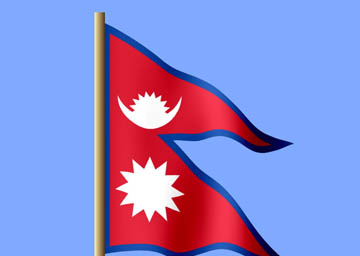
Top 8 World’s Highest Mountains
Geography
| Nepal is located in South Asia between China in the north and India in the south, east and west. While the total land area is 147,181 sq. km. Nepal is mountainous country and it has top 8 world’s high mountains. Diverse geography is its another feature as the highest point in the country is Mt. Everest (8,848 m) while the lowest point is in the Terai plains (60 m). Nepal falls in the temperate zone north of the Tropic of Cancer. Nepal’s ecological zones run east to west about 800 km along its Himalayan axis, 150 to 250 km north to south, and is vertically intersected by the river systems. The country can be divided into three main geographical regions: Himalayan region, mid hill region and Terai region.
The Himalayas (above 3,000 m) comprises mountains, alpine pastures and temperate forests limited by the tree-line (4,000 m) and snow line (5,500 m). Eight out of ten highest mountains in the world lies in Nepal only. They are as below:
- Mt Everest – 8848m – NEPAL
- Mt K2 – 8611m – PAKISTAN
- Mt Kangchenjunga – 8586m – NEPAL
- Mt Lhotse – 8511m – NEPAL
- Mt Makalu – 8462m – NEPAL
- Mt Cho Oyu – 8201m – NEPAL
- Mt Dhaulagiri – 8167m – NEPAL
- Mt Manaslu – 8163m – NEPAL
- Mt Nanga Parbat – 8125m – PAKISTAN
- Mt Annapurna I – 8091m – NEPAL
Culture
Divers culture is one of the main feature of the country. Nepal has around 126 castes and ethnic groups speaking as many as 123 languages. Indigenous Peoples in Nepal have distinct cultures, languages and belief systems. They live across the country – the mountains, the hills and the plains.
Religion
Nepal was declared a secular country by the Parliament on May 18, 2006. Religions practiced in Nepal are: Hinduism, Buddhism, Islam, Christianity, Jainism, Sikhism, Bon, ancestor worship and animism. The majority of Nepalis are Hindus followed by Buddhist. The two have co-existed in harmony through centuries.
Customs
The diversity in Nepal in terms of ethnicity again makes room for various sets of customs. Most of these customs go back to the Hindu, Buddhist or other religious traditions. .
Food
Food habits differ depending on the region and their traditional culture. Nepali food has been influenced by Indian and Tibetan styles of cooking. Authentic Nepali taste is found in Newari and Thakai cuisines. Most Nepalis do not use cutlery but eat with their right hand.The regular Nepali meal is Dal (lentil soup), Bhat (boiled rice) and tarkari (curried vegetables), often accompanied by achar (pickle). Which is referred as Dal Bhat power 24 hours. Curried meat is very popular, but is saved for special occasions, as it is relatively more expensive. Momos (steamed or fried dumplings) deserve a mention as one of the most popular snack among Nepalis. Rotis (flat bread) and dhedo (boiled flour) also make meals in some homes.